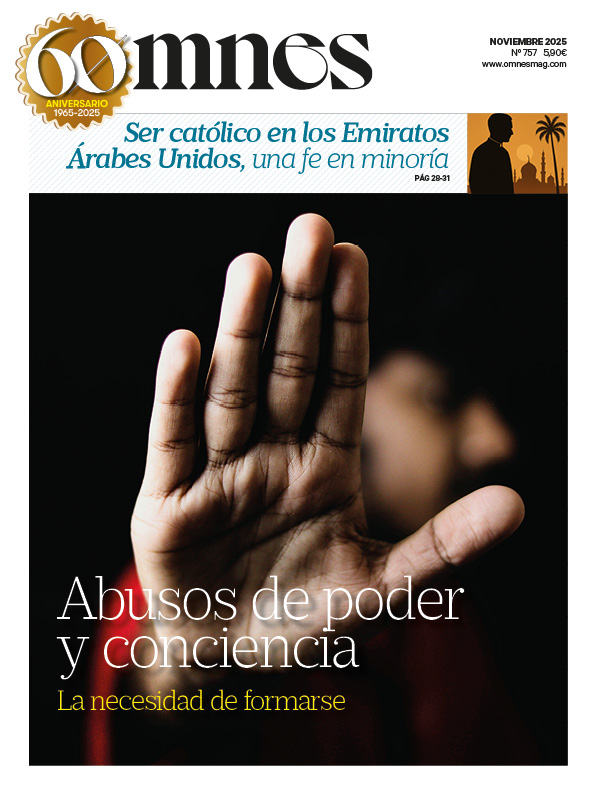Pope Francis has finally arrived in the land where he had longed to come: Japan, the land of the rising sun. During the meeting with the Japanese bishops, as soon as he arrived in Tokyo, one of them asked him: Holy Father, why did you have the illusion of coming to our country since you were young? The Pope answered thus: "I don't know why, but I had this desire since I was young. Later, I once officially expressed this desire of mine in writing to my superior, the Provincial, but he told me no, because he thought that my health, since I do not have a quarter of a lung, would not hold out in the mission land. So I made, years later, a 'revenge' when I was Provincial, by sending five to Japan". And the translator who accompanied the Pope throughout the trip was one of the five, Fr. Renzo de Luca, SJ. However, I think that the Argentinian Jesuit, Fr. Jorge Bergoglio, has now done his best to help the Pope. revengeThe first step was to come to Japan as Peter's successor.
The second Pope in Japan
In fact, he was the second Roman Pontiff to set foot on Japanese soil, after St. John Paul II 38 years ago. It is the country where St. Francis Xavier first sowed the Christian seed, and also the country to which the young Jesuit Jorge Mario Bergoglio would have liked to come as a missionary. The four-day program was intense.
Although Catholics are an absolute minority in Japan's population - 450,000 people out of a total population of 120 million - the media have widely reported his coming, as well as the various events. For example, on the front page of all the newspapers appeared the photograph of the Pope praying in Nagasaki and Hiroshima, or in the company of the people in various places in Tokyo. National television, the NHKbroadcast live the Pope's visit to the Nagasaki atomic bomb memorial park, achieving 20 % of the screen share, which is equivalent to the final of the rugby world championship that was played a short time ago.
Media and communications
Most of these media reports talked about their messages about nuclear disarmament, the atomic bomb, peace, etc. It is logical that they emphasized these messages, because in our country the tragedy of the atomic bomb is not a thing of the past, but remains very topical. It is logical that they emphasized these messages, because in our country the tragedy of the atomic bomb is not a thing of the past, but remains very topical. Is there a specialized hospital for the victims of World War II in any other country in the East or West? In Japan, yes. In Nagasaki, the Atomic Bomb Hospital is still in operation, as indeed its name implies. It is a fact that all Japanese have allergy to nuclear energy, even if it is for peaceful use. Therefore, the Holy Father's words were very much in tune with the attitude of the Japanese.
However, I, who, thank God, was able to accompany the Pope during the visit as the person responsible for Communications, would highlight not only Francis' words, but above all his attitude. The impression I had was that the Holy Father did not come here to work, but to accompany. As a demonstration I could cite many moments: at the airport on arrival, in the cold rain and strong wind, after the four days in Thailand, he kindly greeted the boys who were waiting for him, transmitting a message and saying more or less: "Walk, and fall, because in this way you will learn to get up"; after the message addressed to the bishops of Japan, he gave us a message to the bishops of Japan, saying: "Walk, and fall, because in this way you will learn to get up"; after the message addressed to the bishops of Japan, he gave us a message to the bishops of Japan. asked He listened and encouraged each of the survivors of Nagasaki and Hiroshima, although the program was very tight; he listened until the end to the song that closed the meeting with the victims of the triple disaster of Fukushima, and so on. At 82 years of age, he was logically tired, and he did not hide it at times, but when there was one person, even if it was only one, waiting for him, he immediately turned with all his affection and interest, with his whole person.
I have been, as I said, the person in charge of Communication, and I have collaborated with the people in charge on behalf of the Church, as well as the communication companies and the Catholic media, to receive and attend to national and foreign journalists. A month before the papal trip we had gathered almost all of us to share all the necessary information, and we took a picture together as a souvenir. Then the idea occurred to me that, if I had the opportunity, I would show it to the Pope and ask him to sign it. So I did. Pope Francis left written on two photos, not just the short phrase I had asked him for, but some very meaningful and profound phrases: "Keep on communicating what you have received for free, thank you! To communicate the Good News is to get used to 'greeting the Promises from afar'..., as you are doing now. Thank you!".
I see in these sentences his views on the work of communication, as well as an expression of what, in reality, is always his way of working.
Auxiliary Bishop of the Archdiocese of Osaka and in charge of communications for Pope Francis' visit to Japan.







